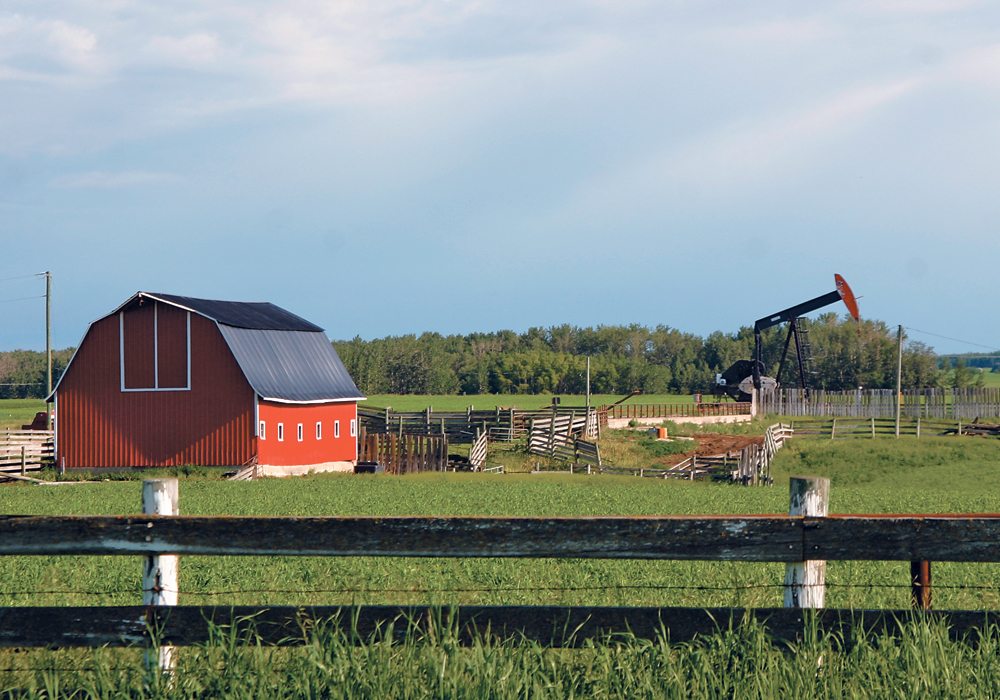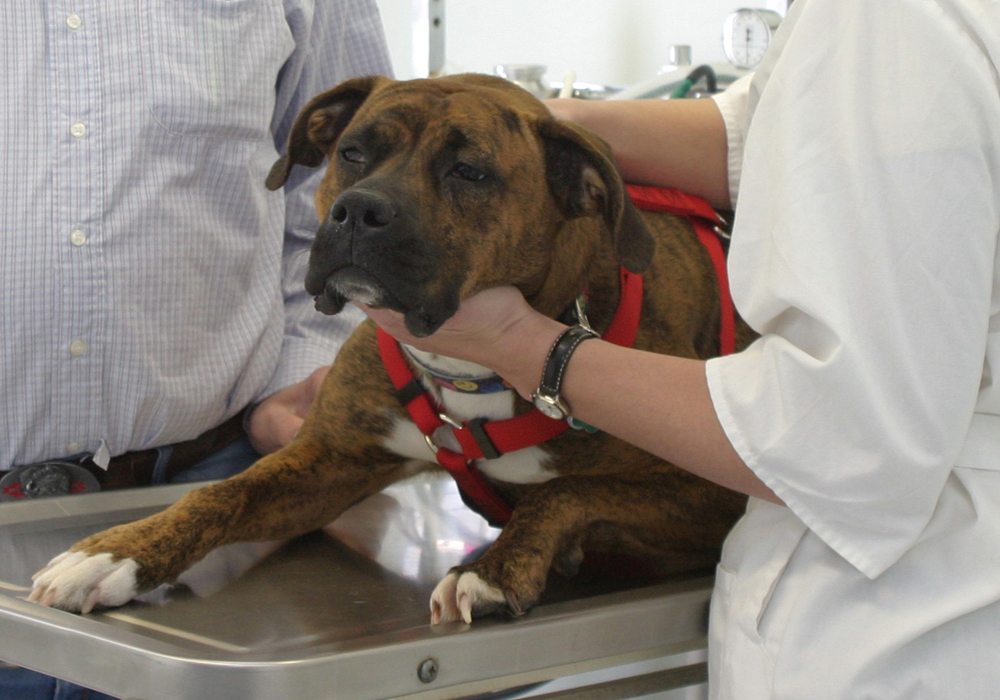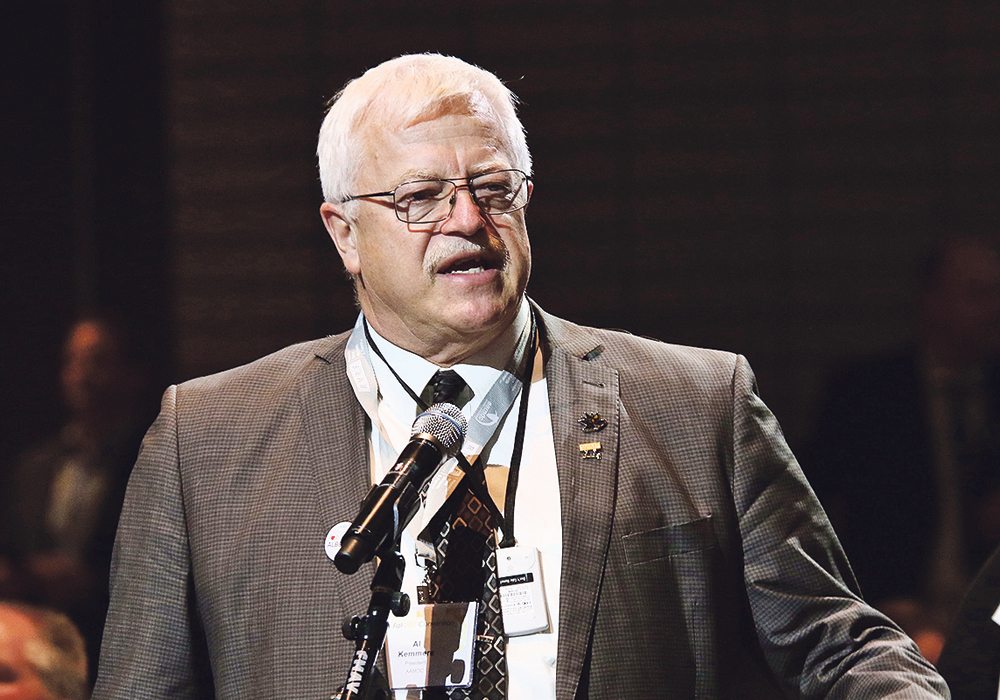Oneil Carlier talks about further tapping into food processing sector as well as new farm safety rules
Alberta Agriculture Minister Oneil Carlier sees greater use of green technologies and boosting the food processing sector as important factors in the future success of the agricultural sector.
Carlier spoke with The Western Producer about his vision and what producers can expect in 2018, during a recent year-end interview.
He said Alberta saw big investments in the food manufacturing sector last year, including Cavendish Farms’ $360-million frozen-potato processing plant in Lethbridge and Champion Pet Foods’ $240-million expansion in Edmonton.
“A lot of things are working really well, so what more could we do around food processing?” he said.
“Right now, food and beverage manufacturing in Alberta is the largest manufacturing sector in the province. I think that shows, as a government, the diversifying of our economy, but it shows also the innovation and diversification role that agriculture can play in the entire province.”
Since the NDP government was elected a little more than two years ago, it has championed plans to diversity the economy, particularly through investment in low-carbon and green technologies, Carlier said.
The controversial plans have led to a carbon tax, more oil and gas regulations, and accelerating the closure of coal plants.
Through those changes, Carlier sees a prime opportunity for investment in agriculture.
“It’s never been about diversifying away from oil and gas,” he said. “But the second and third largest industries in this province are agriculture and forestry. If you’re going to diversify the economy, agriculture is there, prime and ready to go.”
Carlier said producers will be able to use funds from the upcoming Canadian Agriculture Partnership program, a $3 billion investment initiative from the federal and provincial governments, as well as funds from Alberta’s energy efficiency program, to adopt green technologies that help them reduce costs and emissions.
Read Also

Using artificial intelligence in agriculture starts with the right data
Good data is critical as the agriculture sector increasingly adopts new AI technology to drive efficiency, sustainability and trust across all levels of the value chain.
“As an example, what energy efficiencies can we find in irrigation systems?” he asked. “We can take advantage of new technologies … to take part in the greening of the economy, lowering emissions and, at the same time, knowing there are economic benefits in finding those efficiencies.”
However, the government has signalled that it intends to reduce costs in next spring’s budget. It continues to face rising red ink and will run a $10.3 billion deficit in 2017-18.
Carlier acknowledged the agriculture department will be affected by spending cuts, but wouldn’t elaborate on what specifically is on the chopping block.
“There are a lot of programs in agriculture and forestry that are very robust and help rural Alberta,” he said. “All of these can be looked at. I think anyone could agree no matter what the program is, there could be efficiencies found.”
One lingering question is how the government will fund agriculture societies in the coming years.
Earlier this year, the ministry delayed funding to the societies while officials determined where the department could make savings.
Carlier couldn’t say whether agricultural society funding will continue.
“The budget process is still in process,” he said. “We’re all going to have to look at our budgets and find those efficiencies where we can. That process starts now and continues now until the new year.”
Also happening this year, Alberta farmers and ranchers will learn the full details of the new farm safety rules.
The proposed rules will change the way farms and ranches with non-family, paid employees go about doing business.
For instance, workers may be required to wear seatbelts at all times, and owners may need to have plans in place, as well as a manual, for workers to follow when dealing with equipment, products and hazardous materials.
It will be a monumental task to get everyone on board and will require extensive educational efforts, Carlier said.
“It will be a lifetime learning process,” he said. “Nobody is going to argue that safety isn’t important on the farm. They might have a different way on how to get there, but if we can all be on the same page, we can reach our goals. A big part of doing that is going to be education.”
He said it’s important to hear from all producers on the issue, and keep current on new technologies or techniques that can alter farm and ranch businesses.
“It’s important to remember that it’s never an end game,” he said.
















